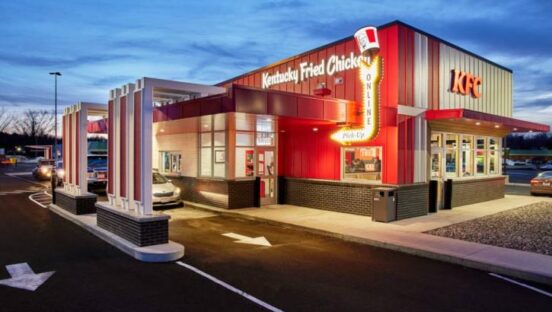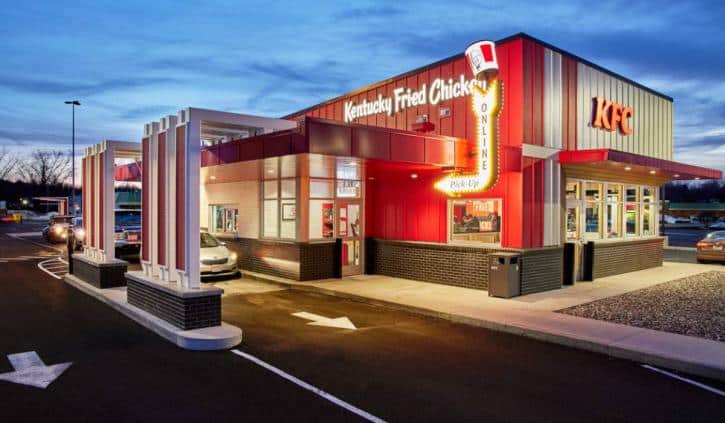In today’s digital-first world, content is at the heart of the customer experience. Ernst & Young’s Future Consumer Index recently recommended that food companies seamlessly integrate digital channels to capture consumer attention, take an agile approach to digital experiences, and plan to evolve those experiences over time.
Digital content is how people gather information about a company, look for products, and more often than not, how they make their purchases. Getting customers in the door is still important, but these days consumers have likely placed their orders from an app or on a website before they get in their car.
Consumer habits changed permanently during the pandemic, but many companies are still using Content Management Systems (CMS) that require teams to file a ticket to get a new page made or ask developers to bring a new promotion to life. Businesses can’t wait days or weeks to create new customer experiences—with consumers focused on digital engagement, global brands need a robust integrated strategy built for multiple touchpoints and coordinated outreach if they want to win new customers.
How did we get here?
Marketers and IT teams spent 2020 rolling out non-contact order fulfillment as quickly as they could. But now customers expect more than a basic retail catalog/ordering app; they’re looking for immersive digital experiences that cross multiple channels, including digital, social media, and in-app interactions. At the same time, marketing promotions, social media, and user-generated content are making it harder just to keep up with everything required to grow the brand for the business.
Today’s consumers face a constant flow of information, but what they’re really looking for is the right flow of content, including real-time updates on purchases, new videos, images, and product descriptions, all personalized for them. When companies balance the need for relevant content with the challenge of managing assets for an iconic multinational, it adds up to a major challenge—especially when balanced against the desire to give different regions and countries something uniquely relevant for each market.
Freedom within a framework
KFC, a global powerhouse with nearly 30,000 restaurants in 149 countries, saw how diverse franchisees—essentially a collection of small businesses—were struggling to quickly create enhanced digital experiences for their regions, while also staying true to KFC’s distinctive brand attributes including its iconic bucket, 11 herbs and spices and of course, the Colonel. Today, a staggering 45 percent of KFC’s sales are digital—but their goal is to reach 100 percent of sales on a worldwide scale, so restaurant staff can use the data to personalize experiences for the customer and ease the burden on team members, enabling them to focus on delivering finger lickin’ good chicken with a smile.
U.S.-based Ashley Travis, Senior Director of Digital Experience & Product Growth for KFC Global, employs a guiding principle known as “freedom within a framework” to inspire her digital teams to craft innovative marketing campaigns. However, outdated technology that relied on hard-coded, market-specific websites hindered their efforts, resulting in inconsistent, outdated content and a subpar ordering experience for consumers.
A composable content platform
Composable content is a transformative approach that Travis adopted to enhance responsiveness, efficiency, and global campaign consistency. Contentful defines composable content as ‘combining content and data from disparate sources so that it can be presented in a variety of formats and channels. Composable content empowers marketers to source and build new content with existing elements from across the company.’ This modularity helps incorporate the most relevant assets for a particular page while combining data from multiple services to provide consumers with a unified experience.
Travis and the broader Yum! Brands team partnered with Contentful, a leading player used by nearly 30 percent of the Fortune 500 to help manage websites and apps and support major milestone events like Black Friday and Cyber Monday. Contentful’s composable platform allowed KFC to swiftly update website content, personalize customer experiences based on factors like time of day and customer segment, and maintain brand consistency around the world.
Before KFC made the change to a composable content platform, even a simple task like updating an image required a service ticket. Now the company can create experiences like flexible menu prioritization that helps promote new products while also checking to make sure the ingredients are on hand for hot new menu items to avoid disappointing excited consumers.
Transactions driving local promotions
The flexibility of composable content enabled KFC to creatively link core aspects of KFC’s menu, including the 11 Herbs & Spices in the company’s Original Recipe, to in-store promotions. When KFC found out that 11 percent of Australians identify as left-handed, Contenful’s platform enabled KFC to create a whole campaign by featuring “left-handed” product offers every day for 11 days, released at 11 a.m., where the first 11,000 customers could claim an offer before it was gone. The award-winning campaign boosted app downloads by 67 percent, with nearly 100,000 new installs during the campaign period and a 39 percent increase in daily app transactions.
The ability to create custom menus, regional promotions, and country-specific offerings enables KFC to offer customers what they want, with personalized offers and customized digital experiences.
When companies want to shift to a composable content strategy, these are some of the key features that can make a content platform more flexible and user-friendly.
- Visual Editor Interface: A core feature of a composable platform is a visual editor that can allow designers to easily layout images and videos in a drag-and-drop approach, without starting from scratch with HTML code. A powerful visual interface makes it easier for non-technical teams to create content and easily publish pages and apps.
- Live Preview: Allows visual inspection of digital experiences before publishing—an essential step for quality control, but often technically challenging to deploy.
- Intelligent Process Automation: Reducing repetitive tasks can directly improve efficiency and help teams get more done. Look for a platform that can automate routine tasks to boost productivity and innovation.
- Content Integrity: One of the biggest challenges with managing a multi-country brand is ensuring that assets and brand attributes are used properly, in compliance with international copyright and trademark law. Having an integrity feature ensures content accuracy and adherence to brand and governance standards.
- Integration Capabilities: When companies refer to a “headless” CMS platform, they mean a tool that can easily integrate with different digital asset managers, ecommerce platforms, and internet infrastructure providers. Look for a system that can seamlessly integrate with the various environments and tools that a team is already using to provide a unified composable content experience and improve workflow efficiency.
In today’s digital landscape, content management systems designed with composable content in mind are essential for driving consistency and scaling worldwide campaigns efficiently. KFC’s commitment to continuous improvement and innovation paved the way for a flexible CMS infrastructure, allowing this beloved brand to deliver dynamic digital experiences as consistently excellent as the food they serve.
As KFC looks ahead to the future, the company is focused on eventually making every purchase a digital transaction by staying at the forefront of digital engagement. The flexible power of composable content built on a robust CMS infrastructure has positioned them to meet the ever-evolving demands of today’s digital consumers, setting a high standard for brands worldwide.
Amy Kilpatrick is the CMO of Contentful. Amy has nearly two decades of experience in marketing and operations, spanning a number of industries, including SaaS, Cybersecurity, and Telecommunications. Amy has a strong track record of scaling marketing organizations with an emphasis on growth and performance. Amy previously held leadership roles at Mailchimp, Aha!, Dell Secureworks, and Cbeyond. During her time at Mailchimp, she was part of the leadership team that helped drive extensive growth between 2016 and 2021. Amy holds a BS in Business Management and MBA from Appalachian State University. Outside of work, you will find Amy spending time outdoors or traveling with her family.








